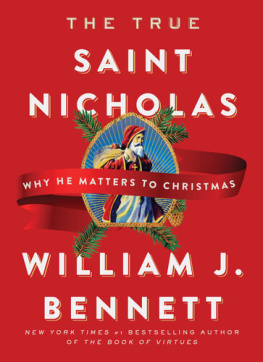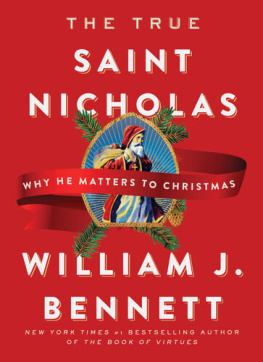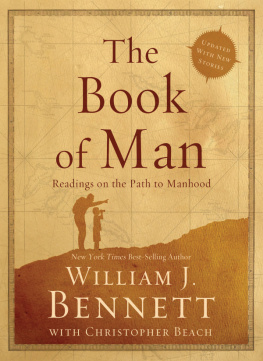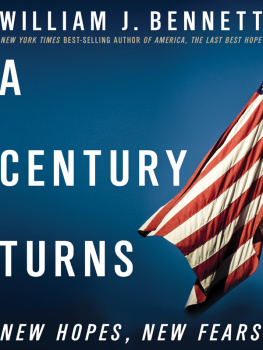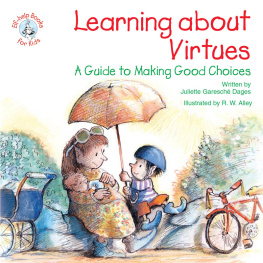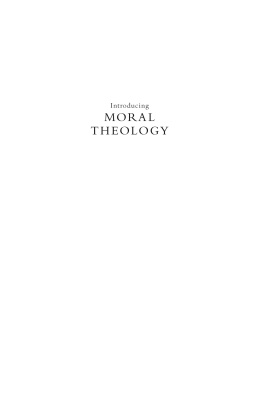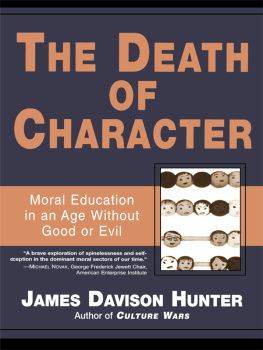Contents

To the families of America from my family: Bill, Elayne, John, and Joseph Bennett.
Introduction

This book is intended to aid in the time-honored task of the moral education of the young. Moral educationthe training of heart and mind toward the goodinvolves many things. It involves rules and preceptsthe dos and dont s of life with othersas well as explicit instruction, exhortation, and training. Moral education must provide training in good habits. Aristotle wrote that good habits formed at youth make all the difference. And moral education must affirm the central importance of moral example. It has been said that there is nothing more influential, more determinant, in a childs life than the moral power of quiet example. For children to take morality seriously they must be in the presence of adults who take morality seriously. And with their own eyes they must see adults take morality seriously.
Along with precept, habit, and example, there is also the need for what we might call moral literacy. The stories, poems, essays, and other writing presented here are intended to help children achieve this moral literacy. The purpose of this book is to show parents, teachers, students, and children what the virtues look like, what they are in practice, how to recognize them, and how they work.
This book, then, is a how to book for moral literacy. If we want our children to possess the traits of character we most admire, we need to teach them what those traits are and why they deserve both admiration and allegiance. Children must learn to identify the forms and content of those traits. They must achieve at least a minimal level of moral literacy that will enable them to make sense of what they see in life and, we may hope, help them live it well.
Where do we go to find the material that will help our children in this task? The simple answer is we dont have to reinvent the wheel. We have a wealth of material to draw onmaterial that virtually all schools and homes and churches once taught to students for the sake of shaping character. That many no longer do so is something this book hopes to change.
The vast majority of Americans share a respect for certain fundamental traits of character: honesty, compassion, courage, and perseverance. These are virtues. But because children are not born with this knowledge, they need to learn what these virtues are. We can help them gain a grasp and appreciation of these traits by giving children material to read about them. We can invite our students to discern the moral dimensions of stories, of historical events, of famous lives. There are many wonderful stories of virtue and vice with which our children should be familiar. This book brings together some of the best, oldest, and most moving of them.
Do our children know these stories, these works? Unfortunately, many do not. They do not because in many places we are no longer teaching them. It is time we take up that task again. We do so for a number of reasons.
First, these stories, unlike courses in moral reasoning, give children some specific reference points. Our literature and history are a rich quarry of moral literacy. We should mine that quarry. Children must have at their disposal a stock of examples illustrating what we see to be right and wrong, good and badexamples illustrating that, in many instances, what is morally right and wrong can indeed be known and promoted.
Second, these stories and others like them are fascinating to children. Of course, the pedagogy (and the material herein) will need to be varied according to students levels of comprehension, but you cant beat these stories when it comes to engaging the attention of a child. Nothing in recent years, on television or anywhere else, has improved on a good story that begins Once upon a time...
Third, these stories help anchor our children in their culture, its history and traditions. Moorings and anchors come in handy in life; moral anchors and moorings have never been more necessary.
Fourth, in teaching these stories we engage in an act of renewal. We welcome our children to a common world, a world of shared ideals, to the community of moral persons. In that common world we invite them to the continuing task of preserving the principles, the ideals, and the notions of goodness and greatness we hold dear.
The reader scanning this book may notice that it does not discuss issues like nuclear war, abortion, creationism, or euthanasia. This may come as a disappointment to some. But the fact is that the formation of character in young people is educationally a different task from, and a prior task to, the discussion of the great, difficult ethical controversies of the day. First things first. And planting the ideas of virtue, of good traits in the young, comes first. In the moral life, as in life itself, we take one step at a time. Every field has its complexities and controversies. And so too does ethics. And every field has its basics. So too with values. This is a book in the basics. The tough issues can, if teachers and parents wish, be taken up later. And, I would add, a person who is morally literate will be immeasurably better equipped than a morally illiterate person to reach a reasoned and ethically defensible position on these tough issues. But the formation of character and the teaching of moral literacy come first, in the early years; the tough issues come later, in senior high school or after.
Similarly, the task of teaching moral literacy and forming character is not political in the usual meaning of the term. People of good character are not all going to come down on the same side of difficult political and social issues. Good peoplepeople of character and moral literacycan be conservative, and good people can be liberal. We must not permit our disputes over thorny political questions to obscure the obligation we have to offer instruction to all our young people in the area in which we have, as a society, reached a consensus: namely, on the importance of good character, and on some of its pervasive particulars. And that is what this book provides: a compendium of great stories, poems, and essays from the stock of human history and literature. It embodies common and time-honored understandings of these virtues. It is for everybodyall children, of all political and religious backgrounds, and it speaks to them on a more fundamental level than race, sex, and gender. It addresses them as human beingsas moral agents.
Every American child ought to know at least some of the stories and poems in this book. Every American parent and teacher should be familiar with some of them, too. I know that some of these stories will strike some contemporary sensibilities as too simple, too corny, too old-fashioned. But they will not seem so to the child, especially if he or she has never seen them before. And I believe that if adults take this book and read it in a quiet place, alone, away from distorting standards, they will find themselves enjoying some of this old, simple, corny stuff. The stories we adults used to know and forgotor the stories we never did know but perhaps were supposed to knoware here. (Quick!what did Horatius do on the bridge? What is the sword of Damocles? The answers are in this book.) This is a book of lessons and reminders.
In putting this book together I learned many things. For one, going through the material was a mind-opening and encouraging rediscovery for me. I recalled great stories that I had forgotten. And thanks to the recommendations of friends, teachers, and the able prodding of my colleagues in this project, I came to know stories I had not known before. And, I discovered again how much books and education have changed in thirty years. In looking at this old stuff I am struck by how different it is from so much of what passes for literature and entertainment today.

